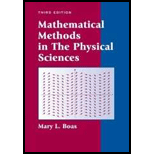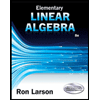
Carry through the details of getting (7.4) from (7.2) and (7.3).Hint: You need the dot product of
Want to see the full answer?
Check out a sample textbook solution
Chapter 10 Solutions
Mathematical Methods in the Physical Sciences
Additional Math Textbook Solutions
Mathematics for Elementary Teachers with Activities (5th Edition)
Mathematics All Around (6th Edition)
Calculus Volume 1
A Problem Solving Approach To Mathematics For Elementary School Teachers (13th Edition)
Using and Understanding Mathematics: A Quantitative Reasoning Approach (6th Edition)
Probability and Statistics for Engineers and Scientists
 Linear Algebra: A Modern IntroductionAlgebraISBN:9781285463247Author:David PoolePublisher:Cengage LearningAlgebra & Trigonometry with Analytic GeometryAlgebraISBN:9781133382119Author:SwokowskiPublisher:Cengage
Linear Algebra: A Modern IntroductionAlgebraISBN:9781285463247Author:David PoolePublisher:Cengage LearningAlgebra & Trigonometry with Analytic GeometryAlgebraISBN:9781133382119Author:SwokowskiPublisher:Cengage Elementary Linear Algebra (MindTap Course List)AlgebraISBN:9781305658004Author:Ron LarsonPublisher:Cengage Learning
Elementary Linear Algebra (MindTap Course List)AlgebraISBN:9781305658004Author:Ron LarsonPublisher:Cengage Learning


